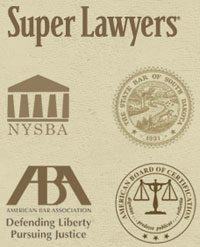
Call Our Firm: 605.385.0330
Commercial Transactions & Litigation, Environmental Law, Natural Resources Law, & Energy Law

Archive for the ‘South Dakota Law’ Category
WATER RIGHTS AND WATER LAW WORKSHOP
The Rapid City office of the United States Geological Survey (USGS) Dakota Water Science Center is hosting a public workshop on South Dakota water rights and water law. USGS has invited attorney David Ganje to give the workshop. The program will be held on September 18th at 10 a.m. Mountain time at 1608 Mt. View Road, Rapid City, SD 57702. The workshop is open to the general public. Admission is free but phone reservations are strongly recommended as space is limited. Reservations may be made by calling 605 385 0330.
South Dakota Underground Trespass
South Dakota courts have not to the date of this opinion piece adopted a definition, nor have the courts ruled on the civil wrong called ‘underground trespass.’ Yet going back to 1877 South Dakota territorial real estate law holds, “The owner of land . . . has the right to the surface and to everything permanently situated beneath or above it.” Beyond this definition of land ownership the legislature has not acted on the issue of underground trespass. Even though South Dakota has no case law on the subject, the state supreme court has a known preference for following a particular legal treatise when deciding legal cases. This treatise clearly defines civil trespass as a wrongful intrusion on one’s property committed on, beneath, or above the surface of the earth with an exception that relates to airspace intrusions.
I leave for another discussion whether the upstanding property-owning residents of Lead and the reputable denizens of Deadwood might, under modern law, be the victims of underground trespass because of the honeycombed labyrinth of old mining tunnels running every which way under the surface of these fine cities. In point of fact most incidents of underground trespass occur out on the plains.
How does underground trespass occur on the plains? Without belaboring a lot of examples, this might occur from underground pipeline leaks, leaking or corroded underground storage tanks, overzealous oil operators infringing a bit too far under unleased property, a so-called disposal well’s ‘waste fluids’ migrating beyond its permissible subsurface boundaries, and so forth.
Is a man’s subsurface his castle? Maybe. A Nebraska Court addressed the issue of subterranean trespass. The court held that the operator of an injection well could be liable if the damaged party could show that fluid migration harmed the damaged party’s ability to produce oil. The North Dakota Supreme Court has ruled that a claim in underground trespass may be trumped by a properly obtained force-pooling order from the state authority which oversees gas and oil operations. In the North Dakota case it must be noted that the claimant property owner did not allege any actual damage to his interests. That claimant was about as smart as the guy who takes a lady out on a date without enough pocket money to buy the coffee. A West Virginia court, in a case that was finally settled and dismissed, ruled that subsurface horizontal fracturing for minerals very close to a Plaintiff’s property line was to be considered underground trespass. The lesson is that modern society and the laws that follow it will consider the issue of trespass on more than just the surface of property.
In addition to underground trespass claims other types of legal claims based on subterranean intrusion are nuisance, negligence, or strict liability. The question then is: What could the actual damage be to subsurface property from such an intrusion? Answers to this include contamination of existing water rights, wrongful taking of a property owner’s mineral rights, contamination of surface soil productivity and degradation of an owner’s foreseeable rights to mineral extraction. I submit that these subsurface intrusions will – if they have not already – occur in the state. There will be much work for the courts to do.
David Ganje. David Ganje of Ganje Law Offices practices in the area of natural resources, environmental and commercial law. The website is Lexenergy.net
South Dakota’s Approach To Condemnation
The use of eminent domain (condemnation) is a modern legal problem. Condemnation is the taking of property for a public and in some cases a private interest. Condemnation is a legally sanctioned sword. My argument in this article is not that eminent domain as a concept is wrong. My argument is that in its present state, as a legal vehicle attempting to provide fairness, eminent domain is a lemon in need of repair on both sides. This law allows a governmental body – and a private business – to convert privately owned land to another use, often over the objections of the landowner. Traditionally in a legal taking a landowner receives “market value” for the land taken. This often includes money for reduction in agriculture output or for the loss of other productive use of the land.
While eminent domain makes sense under a public utility easement paradigm, how does this process apply when a pipeline easement on a landowner’s property is the “transportation vehicle” for a commodity? How does one calculate “fair market value” when millions of dollars’ worth of product are flowing across privately-held land? Candidate Trump said, “I want the Keystone pipeline, but the people of the United States should be given a piece, a significant piece of the profits.” South Dakota law does not take this into consideration. Condemnation of one’s land involves forced negotiation required by law, and sometimes involuntary litigation. Is a one-time payment for an easement fair compensation? Is the condemnor (developer or government agency) required to provide its plan of work and operations to the condemnee (property owner) so the owner can evaluate this information? This would create a fairer playing field in negotiations. South Dakota law does not provide for this. Should the landowner be granted his expenses and attorney’s fees in a trial and for an appeal if the final award given is greater than the last ‘offer’ made by the condemnor? Or if a mistrial is called which is not the fault of the landowner? South Dakota law does not provide for this. Is the condemnor required to provide written disclosure of its calculations and basis for a proposed offer for the property? South Dakota law does not provide for this. In a federal condemnation, even if a landowner does not formally answer the condemnation lawsuit the landowner may still present evidence of the value of his land and may participate in the distribution of awarded monies. South Dakota law does not provide for this.
The law of condemnation brings out a curious inconsistency in the character of the state. South Dakota is a strong property-rights and individual-rights state. Aside from the important and unique relationships of Indian reservations to the state and to the federal government, private property in South Dakota is a hallowed right. State laws are vigilant in protecting one’s real estate and other property from intrusion, reduction in value as well as protecting the right to use the property for any lawful purposes. The state Constitution, like the federal, directs that, “Private property shall not be taken for public use, or damaged, without just compensation. . .”
Thus we get to my puzzlement. South Dakota has done very little to modernize eminent domain laws. This is not a case of the emperor having no clothes. This is a case of the emperor having no vision. The takeaway is that state leaders have no appetite for changing the status quo.
In modern vernacular ‘trending’ means that which is currently popular in social media, however in common English it means that which is changing or developing in a certain direction. The word ‘trending’ applies to the painfully slow but observable changes in the law of eminent domain. Unfortunately these changes are not coming from South Dakota political leaders. The state’s recent passage of a voluntary mediation statute for condemnation cases does nothing to address the substantive changes needed.A national trend has started toward balancing the sacrifices a property owner makes when business or government does its eminent domain dance. Courts, and over time other state legislatures, will continue to correct the ills of eminent domain when it is used as a legal sword. South Dakota must cultivate a fairer system for the taking of property.



